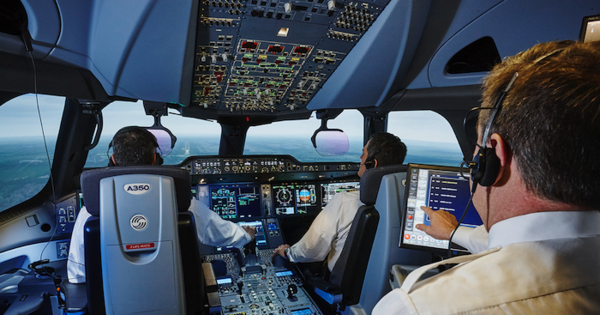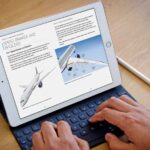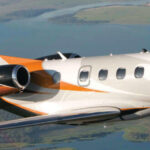1. Seek feedback
One of the best ways to improve your performance and prepare for your type rating is to seek feedback from others. Seeking feedback is a cornerstone of pilot development and safety. Constructive feedback can highlight areas of improvement that one might be unaware of, thereby preventing potential pitfalls. By actively engaging with peers, pilots can gain valuable insights into their performance and can also use this to benefit themselves and others for the type rating This collaborative and introspective approach enables pilots to refine their skills, learn theory profiles beforehand, and consistently uphold the highest safety standards while using their time wisely.
2. Study, study, study and study again (before, during and after)
Every day-study will help you achieve the best result. Some Approved Training Organizations will provide you some in-house guidance and materials, but the FCOM (Flight Crew Operating Manual) is essentially the primary source of knowledge acquisition when transitioning to a new aircraft. It doesn’t only establish standardized procedures and practices to enhance operational philosophy and policy, it serves as a review guide for use in initial / recurrent training and proficiency checks.
The purpose of the FCOM is to provide the necessary operating limitations, procedures, performance (as extracted from the AFM), and systems information the flight crew needs to safely and efficiently operate the airplane during all anticipated airline/operator operations.
During your type-rating course master aircraft systems documentation, make summaries of the aircraft systems by a good note-taking technique. Whether you are taking notes in class or while reading through manuals, notes are a great way to review the information in initial training. Note-taking is also beneficial because it will help you remember the important items discussed in a ground school lecture or even during the sim. Instead of digging through manuals, it is convenient to have a central location to review important information. Writing notes also keeps you engaged during the grueling hours of ground school.
Be focus on normal and abnormal procedures, study performance characteristics and limitations.
Never hesitate to practice ‘chair flying’: sit in a chair in your room and go through maneuvers, flows, and checklists while looking at a poster of the cockpit. Chair flying can be done alone or with another person. Having another person to make the captain or first officer calls will make chair flying even more realistic. This is a great way to learn outside of the classroom or simulator
Know the callouts precisely and say the callouts out loud. If you wake up in the middle of the night and someone says, go around, you should be able to spew back the procedure verbatim 😉
Digital quizzes and flashcards are also a powerful tool for active recall – a learning technique that helps with memory retention. This will help you understanding and reinforcing key concepts through repetitive practice. Recalling information from memory strengthens neural pathways associated with that knowledge, making it easier to retrieve in the future.
Smartcockpit.com contains thousands of quizzes for professional and airline pilots: You always have your study materials at your fingertips and you can train and sharp your knowledge anytime, anywhere!
3. Mastering simulator training
The training in simulators is the life-blood of transforming theoretical knowledge into practical skills. Full Flight Simulators (FFS) create an immersive environment that mirrors real aircraft behavior accurately.
Before you start your type-rating you can use home-based flight simulators such as X-Plane or Microsoft Flight Simulator, special apps, and virtual reality (VR). These platforms let you get comfortable with the cockpit layout and controls, letting you rehearse those important checklists and flows in a low-pressure setting, and can be great at recreating the scenarios you’ll be facing in the full-motion simulators ahead of time. YouTube also offers plenty of channels/videos that can be also very helpful. But remember to always take these videos as a helping aid: you must always follow your company’s SOP and rely on FCOM information in the end.
During your type rating simulator training, it is essential to know exactly what must be achieved by the end of each session: review technical documentation and flight maneuvers very well in order to follow operating procedures consistently. Do not forget to show up well-rested and focused!
Session after session you will be evaluated on your manual flying capabilities, automation knowledge and good practice, systems management, decision-making under pressure and multi-crew cooperation.
4. Manage your time
Time flies, especially in aviation. Time management is pivotal when preparing for something as intense as a type rating course.
The nature of the course, with its combination of theoretical and practical lessons, demands a structured approach to time: it requires a delicate balance between studies, simulator sessions and personal life. The intensity inherent in this type of training requires good stress and fatigue management. Drawing up a pragmatic timetable, including full coverage of the subjects and practice of the skills, is crucial. It is also essential to allow time for rest and leisure, to ensure a balanced approach. The use of organizational tools such as calendars and timers proves to be a strategic ally in maintaining a structured and balanced course trajectory, promoting both productivity and well-being. The main thing to remember is to chart your course well in advance, and ensure you touch down on all your commitments.






